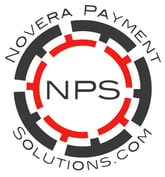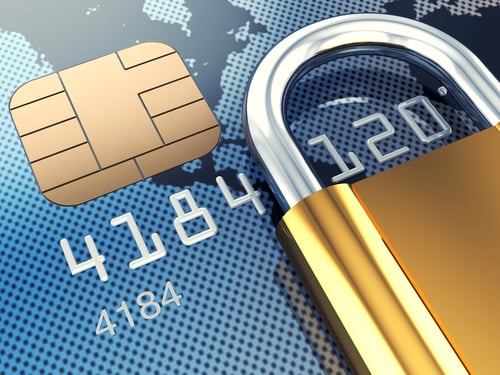What makes EMV transactions secure?
Card authentication, cardholder verification and transaction authorization processes are all enhanced with EMV. Specifically:
Card Authentication: Is the card real? Unique data for each transaction travels between card, the POS device and issuer to ensure authenticity. EMV transactions also create unique transaction data, making captured transaction data incapable of being used to execute additional, new transactions.
Cardholder Verification Method (CVM): This step validates the cardholder as the legitimate owner of the card, using verification parameters set up by the issuer. The issuer of the card determines which of the following four methods will be required for a particular transaction: online PIN, offl ine PIN, signature or no CVM required. EMV supports each of these four verification methods.
Transaction Authorization: Like today’s magnetic stripe transactions, transaction information is sent to the issuer for approval. What’s different is a transaction-specific cryptogram (code) is also sent to the issuer who then either approves or declines the transaction and sends a unique response cryptogram back to the POS device for the card to interpret and validate the transaction. The dynamic exchange of information needed to execute each transaction provides the extra security missing from the static, old technology used in magnetic stripe transactions.
How many US credit cards will be EMV-enabled by the end of 2015?
The Aite Group predicts 70% of US credit cards will be EMV-enabled by the end of 2015. It also predicts there will be 4.5 million EMVcapable payment terminals in the US market by the end of 2014, and growing to nearly 7 million terminals by end of 2015. (The Aite Group, LLC, is an organization that provides research and advisory services focused on business, technology, and regulatory issues and their impact on the financial services industry.)
What are the key benefits of moving to the EMV standard?
- Improves transaction security for credit and debit card-present environments
- Creates common cardholder experience globally
- Supports multiple methods of cardholder verification (signature, pin, etc.), providing flexibility of payment acceptance without sacrificing security
- Bundles emerging technologies - POS devices with chip technology are often grouped with NFC (contactless) and mobile; EMV adoption accelerates merchant capabilities to accept payments in new ways
When can US businesses expect customers to begin presenting EMV chip cards for payment?
Now. The Smart Card Alliance/EMV Migration Forum in May 2014 estimated chip cards in the US total between 17 and 20 million. It’s important for businesses to develop EMV POS equipment adoption plans now.
Should merchants upgrade or buy new POS hardware and PIN pad devices?
Review existing POS equipment or systems to learn if upgrades are possible or whether new EMV-compatible POS hardware must be purchased.
Standalone POS. The only job of stand-alone POS is to authorize and clear payment card transactions and it is the easiest EMV solution to implement.
- Is your POS device EMV compatible? (Does it have a slot for EMV cards? EMV-compatible terminals have a slot, typically located at the bottom of the terminal, into which the EMV chip card is inserted and read; this slot is different from the side swipe used with magnetic stripe cards.)
- If POS EMV compatible, will you need to schedule a service call to have EMV software installed or will a remote software download be available? (Ask your payment processor—which is Worldpay if we do your payment processing)
- Worldpay’s standalone EMV solutions: POS VX 520 terminal and VX 680 wireless terminal. A remote EMV software download will be scheduled before the October 1, 2015, liability shift.


